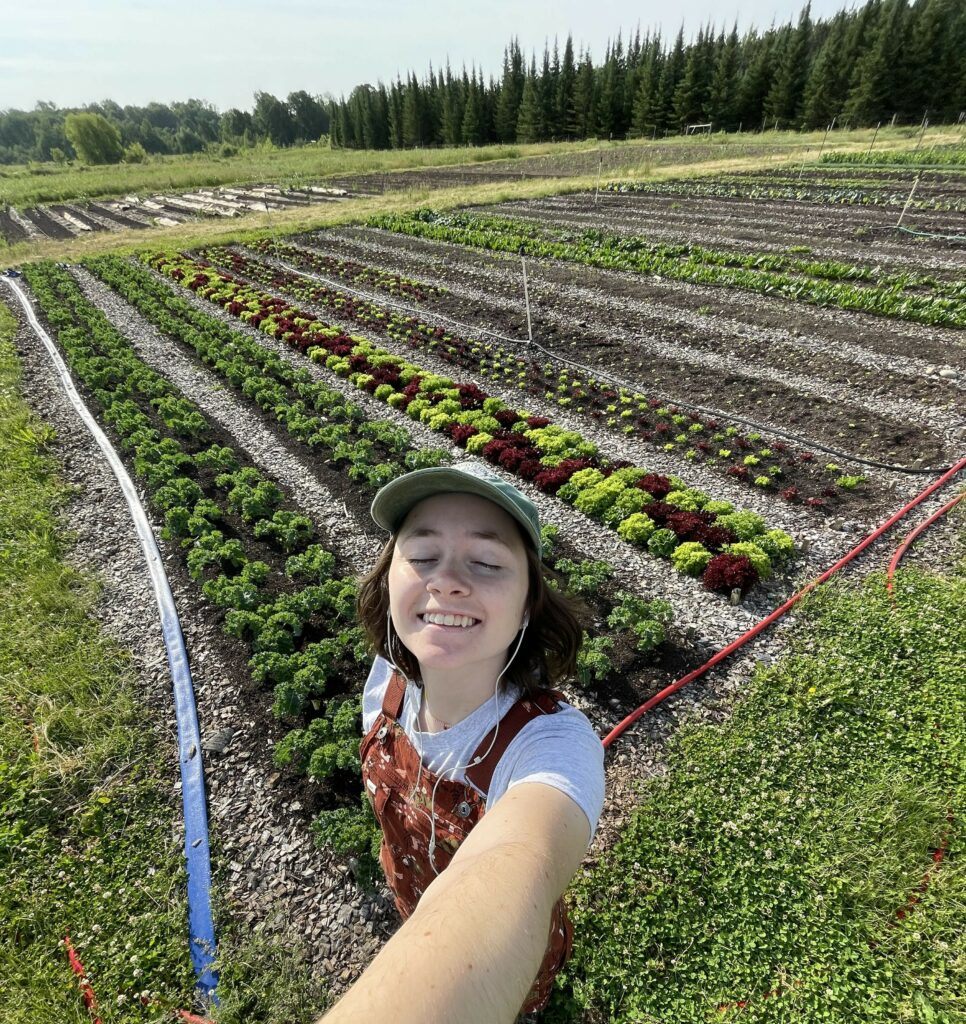From Seed to Salad: Small Solutions to Climate Change
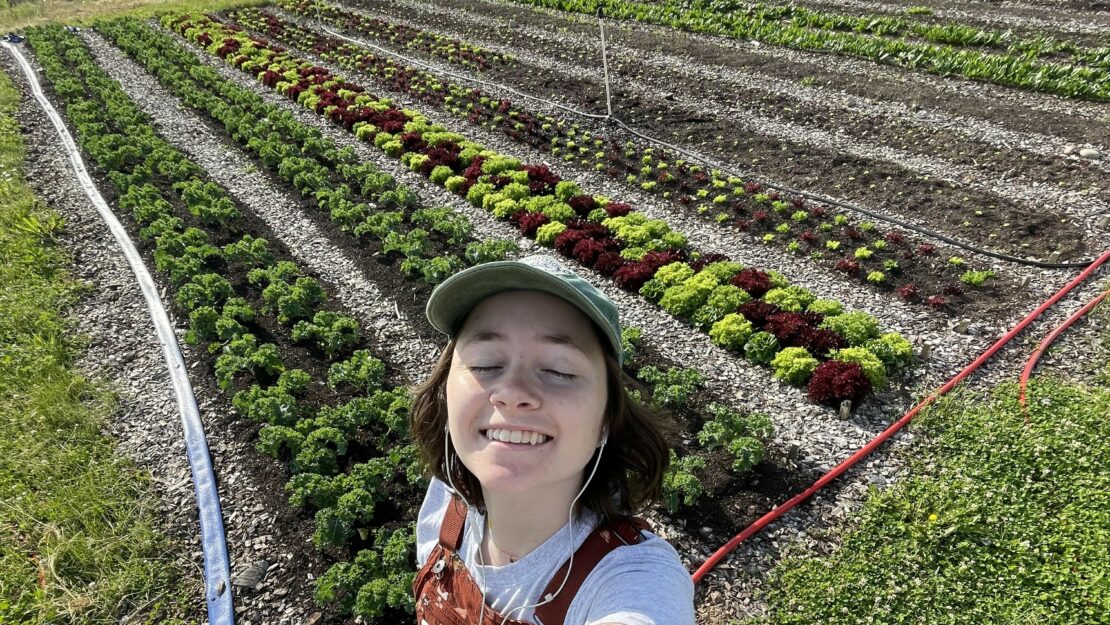
By Kaden Mettel, Communications Outreach Specialist Individual Placement / AmeriCorps Member placed at Osprey Wilds Environmental Learning Center
It is lettuce season at Trapp Farm, the sustainable farm that supplies Osprey Wilds Environmental Learning Center with food and education for visitors. Trapp Farm encompasses 107 acres of farm beds, grazing cattle, poultry chickens, pollinator prairies, and forest. The farm helps provide food for over 45,000 meals at Osprey Wilds using only regenerative farming methods. As a Communications Outreach Specialist with Osprey Wilds, I spend 20 hours a week working on the farm. Lately, much of this time has been taken up by lettuce.
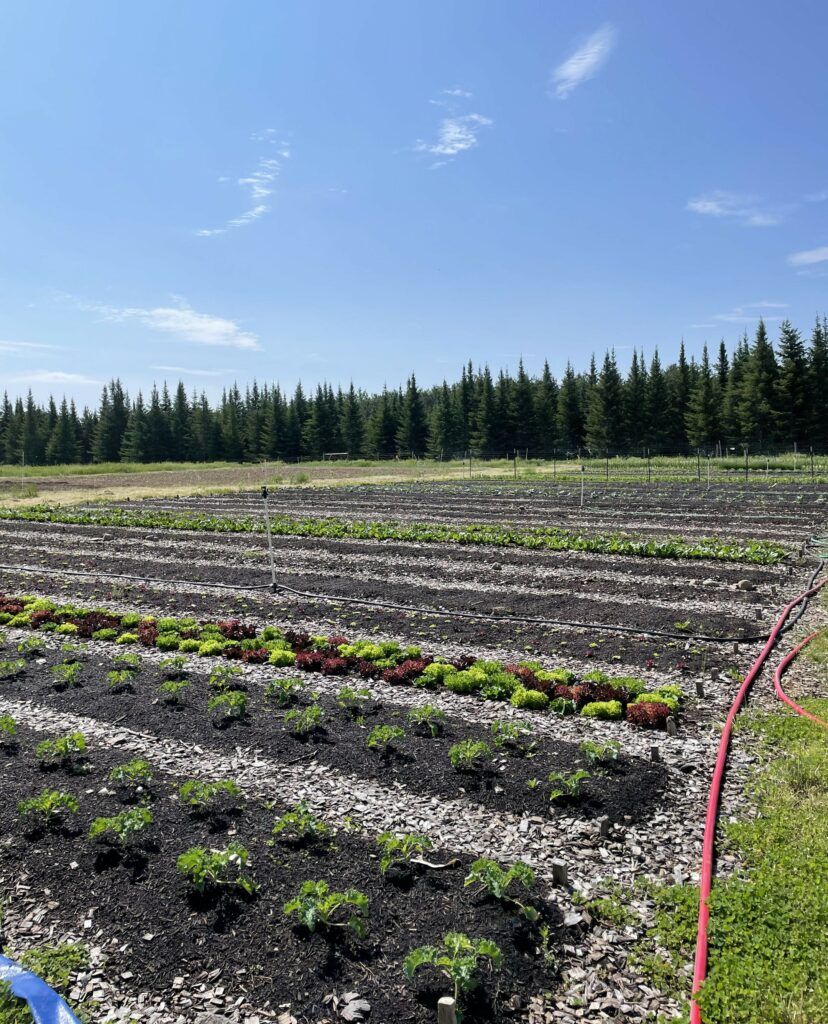
Every head of lettuce that makes its way into Osprey Wilds’ dining hall starts from a single seed. Salanova lettuce is first seeded in plastic beds where they are nursed before being transplanted into garden beds. This process ensures a healthy start to the growing process in a controlled environment before being transitioned to the more tumultuous outdoors.
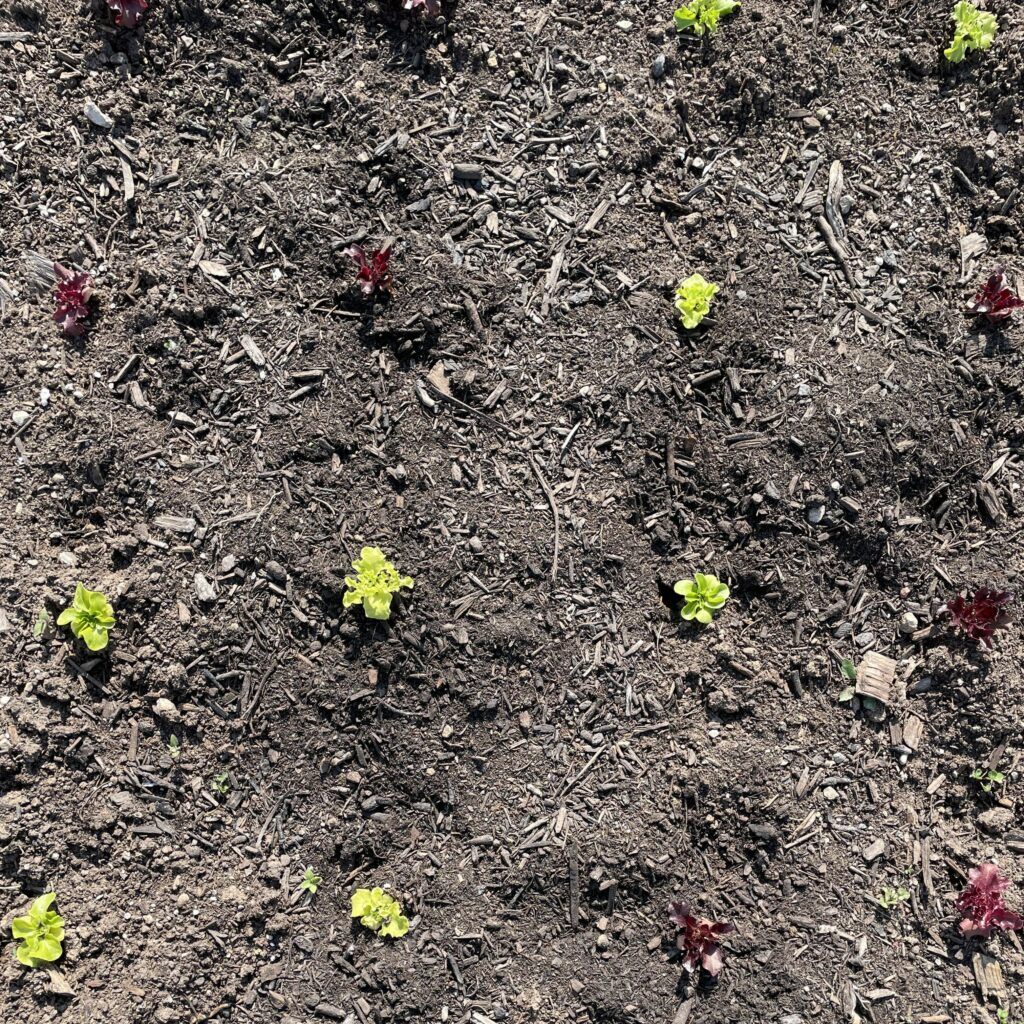
Once the lettuce heads have established roots, cultivating and watering the garden beds becomes the next highest priority. Making sure the small plants are not out-competed by weeds involves weekly cultivation. At Trapp Farm, this often looks like hand weeding larger plants and using a stirrup hoe to uproot smaller weeds. We do not use any sprays or chemicals on our plants as they grow. Watering occurs on a daily schedule as nearby sprinklers go off on timers. This schedule is also aided by rain, which acts as a kind of light natural fertilizer by delivering plants nitrate to grow healthy, green leaves.
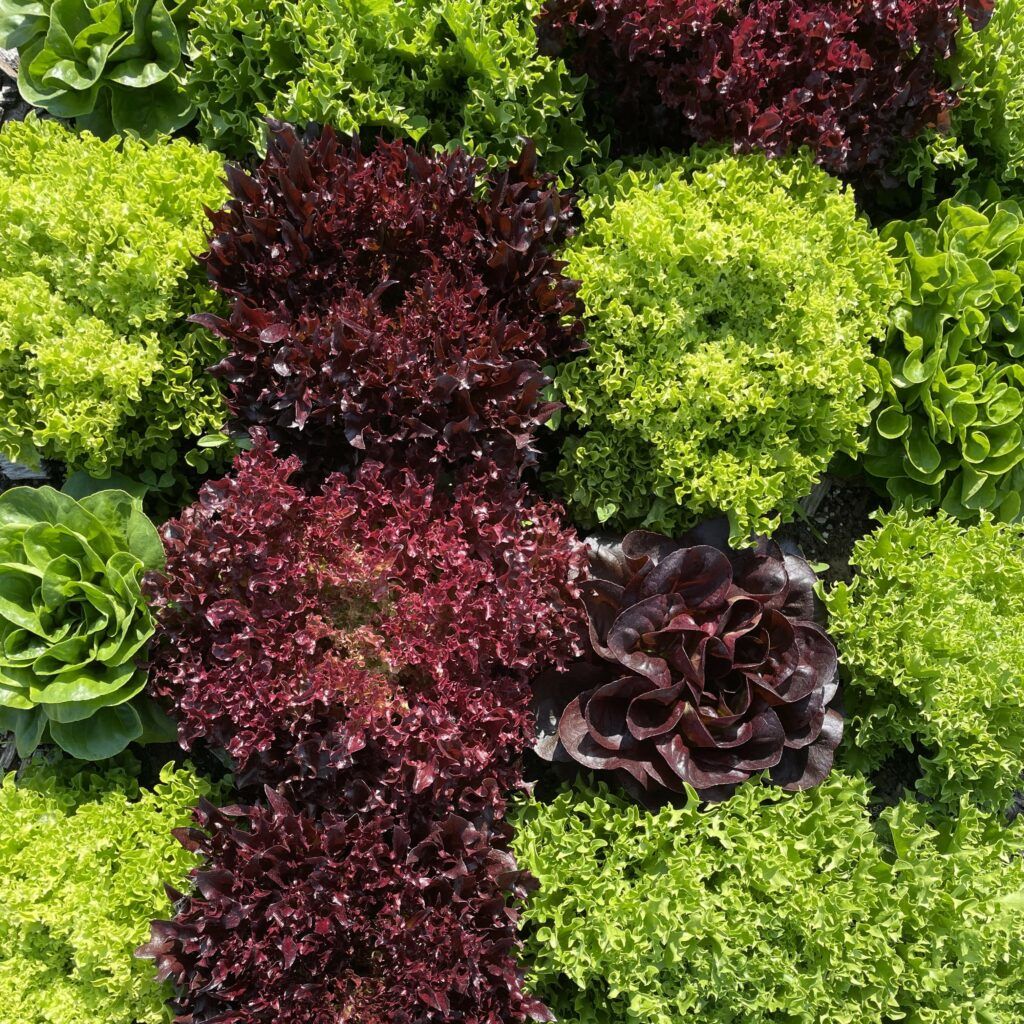
After a few weeks of careful care, the Salanova is ready to harvest! Harvesting is one of the most exciting parts of the growing process because you can finally see all your hard work pay off. Once the heads are plentiful, they are harvested by cutting the outside leaves and leaving a small growing core. This allows the plant to regrow for the next harvest, creating a regenerative source of Salanova lettuce.
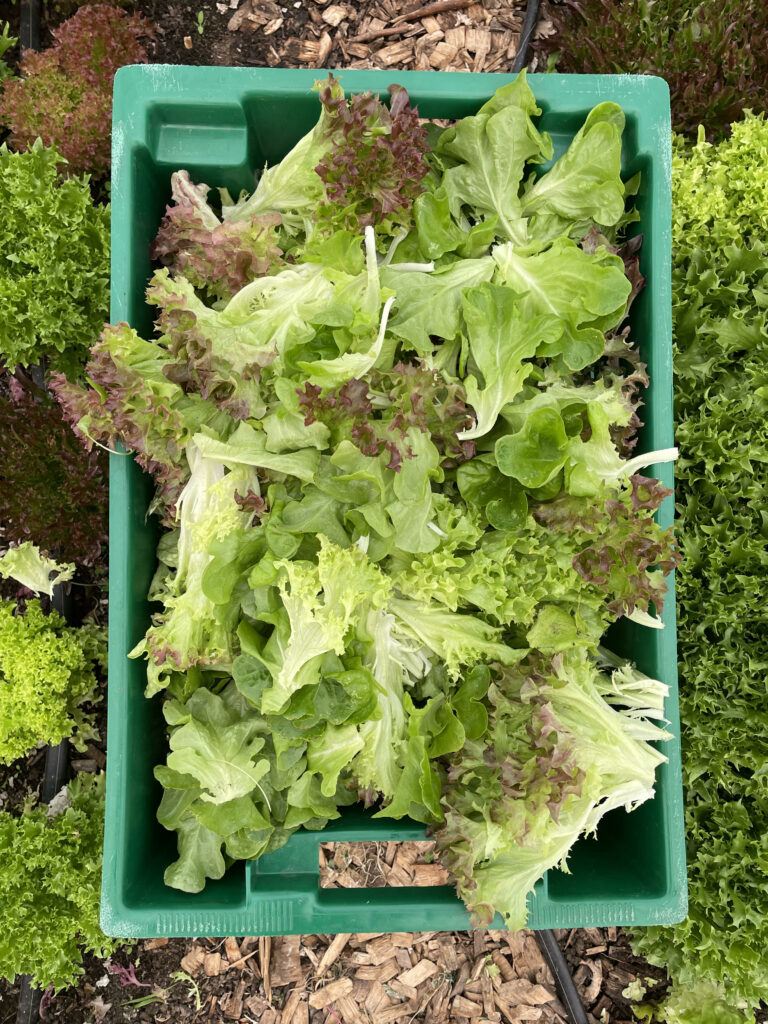
The cut leaves are put in baskets, weighed, and taken to our washstand. The produce processing at Trapp Farm is very simple and consists of just two steps: washing and spinning! For step one, the lettuce leaves are loaded into our bathtub bubbler which uses a jacuzzi jet to create bubbles that disturb any dirt off the lettuce. After a few minutes in the bubbler, the leaves are transferred to our washing machine-turned salad spinner. This homemade contraption sends a basket of greens through a spin cycle that dries the lettuce in minutes. After the produce is washed and dried, it is bagged and boxed for Osprey Wilds.
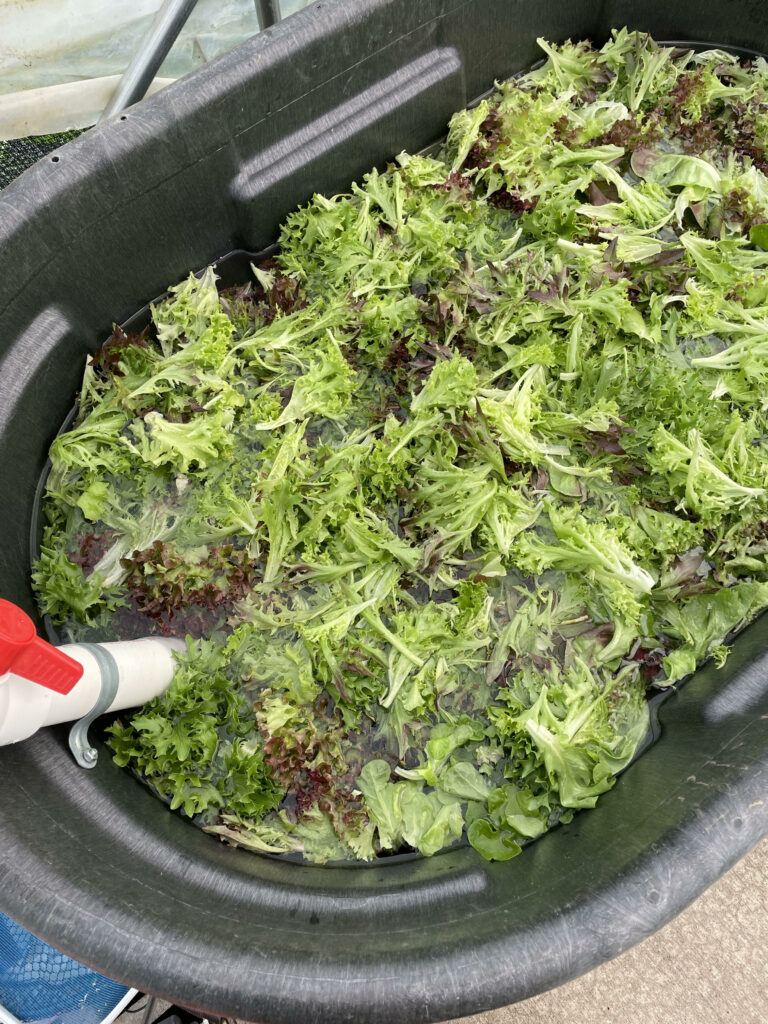
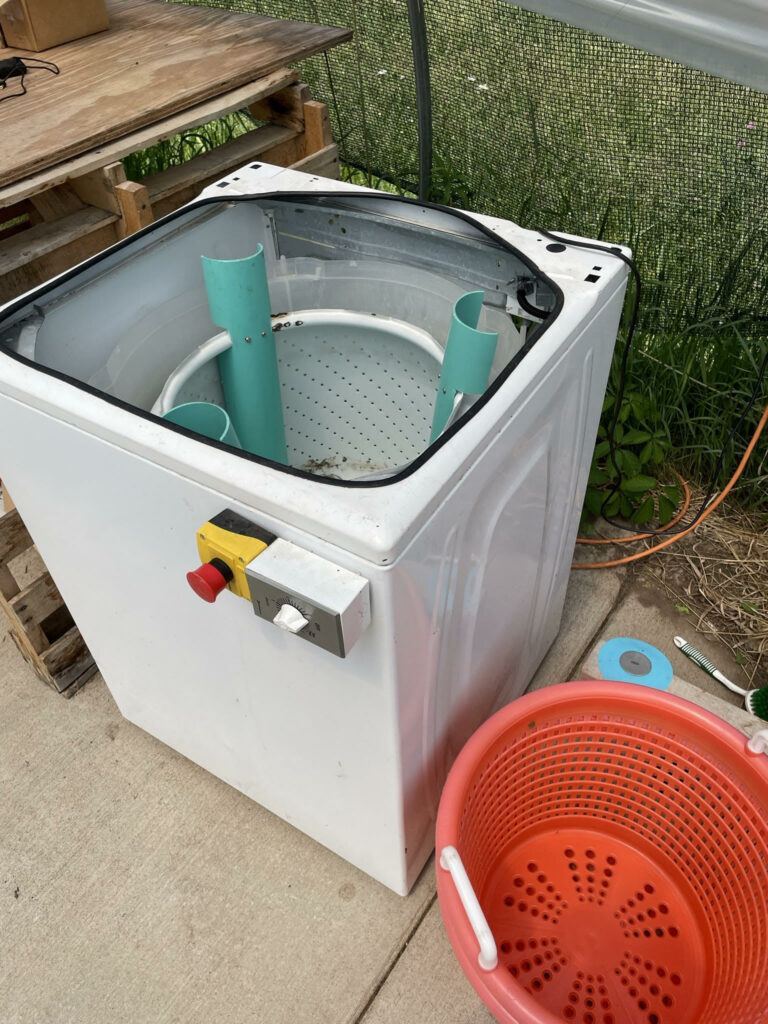
Boxes of Salanova make the short trip in my car from farm to kitchen, and the lettuce I cut that morning is served in the salad bar that night. Osprey Wilds’ Trapp Farm not only builds soil health and sequesters carbon through regenerative, no-till practices, but it also grows healthy, nutrient-dense food for people just down the road. When grown in harmony with natural systems and ecological principles, solutions to climate change can look as small as a Salanova seed.
